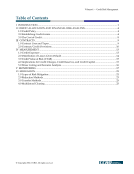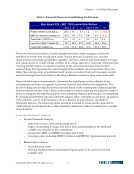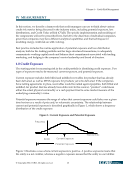Volume 4— Credit Risk Management © Copyright 2002, CCRO. All rights reserved. 8 3.0 The Cost of Credit Economic costs being placed on the business should be evaluated. Credit risk managers should develop measures that reflect these costs and encourage optimization of risk utilization by traders and trading management. Some of the costs are counterparty specific others apply more generally to the trading business. Energy marketing and trading companies should assess a counterparty “credit charge.” The purpose of this credit charge is to give traders an incentive to trade with stronger counterparties or collect an appropriate risk premium for taking weaker counterparties by creating a transparent cost of dealing. Note that while we view this approach as a best practice, it is not easy to implement, especially in day-to-day trading. The challenges of applying a credit charge to regular trading activities are heightened because the online trading platforms do not include a credit charge for the prices posted on these platforms. Additionally, some trades could qualify as exposure-reducing trades (see discussion in Section VI), thus providing an inherent benefit to the organization. Structured transactions should be priced inclusive of a credit reserve reflective of the credit risk of the transaction. There are a couple of methods for developing these costs. One is to apply historical default rates to the transaction price as a deduction from the value of the transaction. For example, for a particular transaction type and maturity, counterparty A may have a 2% default rate on financial obligations. By multiplying this default rate by the fair value of the transaction, a charge may be assessed. The advantage of this approach is that the credit assessment is directly related to real performance. Unfortunately, historical information may not always be available. Furthermore, this method is tied specifically to financial default, not to performance under the contract generally. Another method is to look at specific counterparty risk premiums in traded bonds or default swaps and apply that risk premium (percentage) to the transaction price. For example, counterparty A may have a one-year credit spread to treasury bills of 30 basis points. A credit assessment can be obtained by multiplying these 30 basis points by the fair value of the transaction. Unfortunately, while this may be the most current market assessment, it may not be directly applicable to a non-rated counterparty. In addition, this approach assumes that the company issuing credit has a rating of AAA or similar, which could result in overcharging counterparties. This method also assumes that the bond market is efficient, and that the spread relative to risk-free rates is highly correlated to the cost of credit over the life of the transaction.
Purchased by unknown, nofirst nolast From: CCRO Library (library.ccro.org)



































